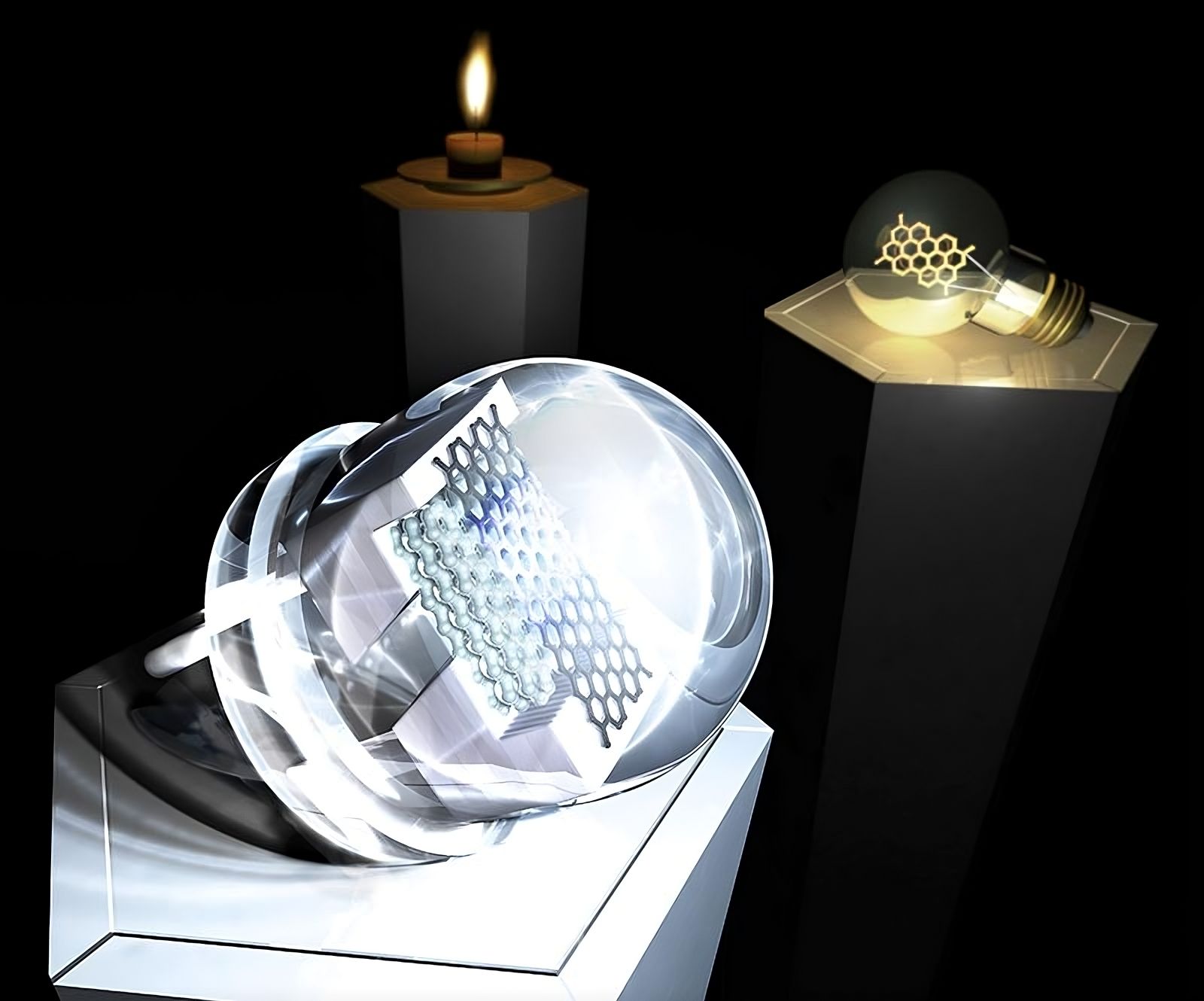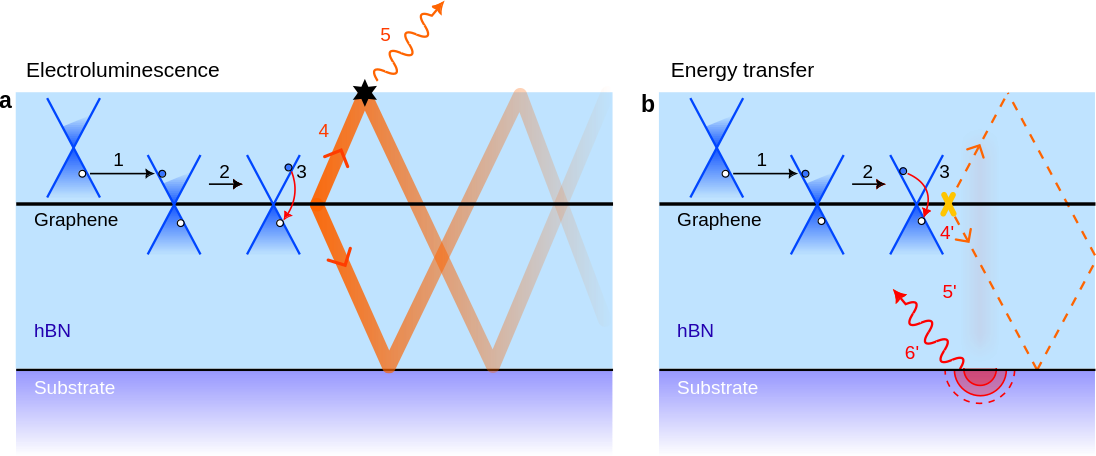Follow us on Google News (click on ☆)
Semiconductor-based light-emitting diodes (LEDs) have revolutionized consumer lighting by reducing power consumption fivefold. They have gradually replaced incandescent bulbs, which produce light through thermal radiation from a metal filament.

Artist's view of an electroluminescent diode (LED) based on graphene and boron nitride.
© LPENS
Between these conductive metals and the semiconductors used in LEDs lies graphene, a two-dimensional semi-metallic material that could be described as "intermediate," as it exhibits properties of both. Unsurprisingly, for example, under high voltage, it displays well-documented incandescence (in the visible and near-infrared range).
In 2018, measurements of electrical current fluctuations suggested that electrons in high-quality graphene could reach an out-of-equilibrium state favorable for light emission via electroluminescence. However, this prediction, surprising for a material lacking a bandgap, required experimental confirmation.
In a paper published in the journal Nature, the result of a French collaboration, a group of French researchers demonstrates for the first time that, under certain conditions, graphene can emit light beyond its natural incandescence by entering an electroluminescence regime. This emission (in the mid-infrared range) at a wavelength of 6.5 µm is possible when the graphene crystal is exceptionally pure and defect-free, while being protected from external physicochemical damage by a matrix of two-dimensional material composed of hexagonal boron nitride.
This discovery was accompanied by a second surprise: in this graphene electroluminescence regime, researchers observed an exceptional increase in the efficiency of near-field electromagnetic energy transfer within the graphene/boron nitride stack.
Using infrared pyrometry—a technique commonly employed to assess building heat loss with an infrared camera—researchers demonstrated that graphene electrons transfer most of the electrical power injected into the device to the substrate via specific elementary excitations of the encapsulating material (hyperbolic phonon-polaritons of boron nitride).
Until now, this radiative transfer mechanism, though known in semiconductor-based LEDs, was considered anecdotal due to its very low efficiency. Here, it becomes the dominant energy transfer mechanism (up to 75%).
Finally, the consortium showed that this energy transfer critically depends on the crystalline quality of the graphene encapsulant. Indeed, by using boron nitride produced via a polymer ceramization method, it is possible to suppress near-field electromagnetic transfer without altering the system's electrical characteristics.

Graphene electroluminescence (a) and near-field electromagnetic transfer (b) in its encapsulant (boron nitride) are two sides of the same mechanism: under high voltage, the rapid potential drop in the channel leads to electron injection via tunneling (1) into the conduction band, which, after intraband relaxation (2), produces electromagnetic excitation through an interband transition (3). For long-wavelength excitations (a), a collective light-matter mode of the structure is excited (4), which can escape into free space via a scatterer or surface defect (5).
(b) Conversely, short-wavelength excitation produces localized heating around the graphene (4'), which, through thermal conduction in boron nitride (5'), heats the substrate, whose incandescence can then be observed in the mid-infrared range (6').
© Material from: 'L. Abou-Hamdan, Electroluminescence and Energy Transfer Mediated by Hyperbolic Polaritons, Nature, published 2025, Springer Nature'
The researchers' goal is now to exploit graphene's semi-metallic nature to induce electroluminescence at arbitrary wavelengths. This variability would clearly distinguish graphene from semiconductors, whose emission wavelength is constrained by the bandgap value. In the long term, the unprecedented flexibility of this type of source could pave the way for applications in optics, telecommunications, and electronics.